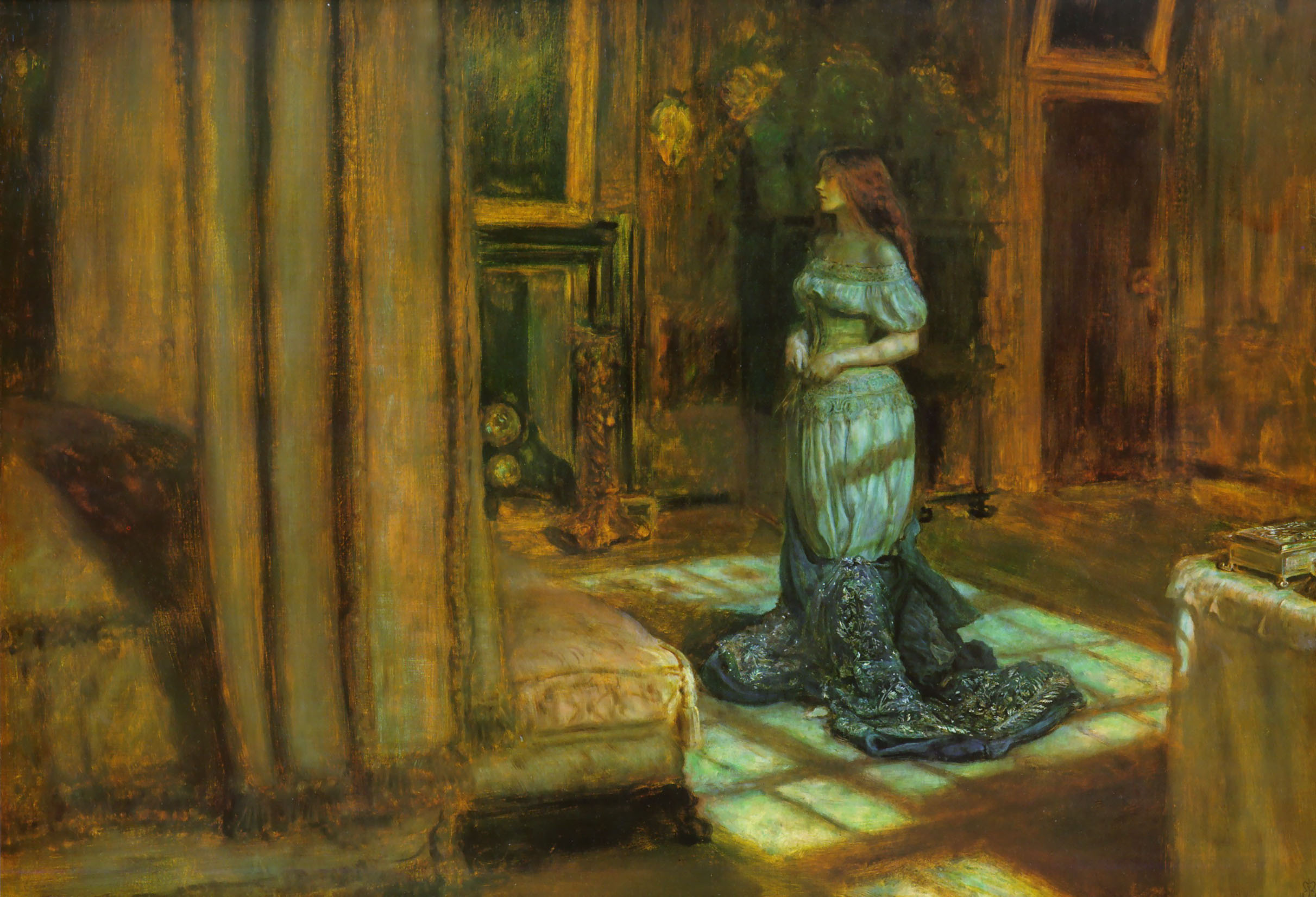Having recorded poems by Byron and Shelley it’s high time I offered something by the third member of that extraordinary trio known as the ‘second generation’ of the Romantics. So here is a reading of Keats’s narrative poem “The Eve of St Agnes”. It’s written in Spenserian stanzas, a poetic form that both Byron and Shelley had experimented with; despite the huge popular success of Byron’s “Childe Harold’s Pilgrimage” I feel that Keats is the one who uses the form most successfully. There is a Spenserian richness to the language here, enhanced by the leisurely form of the stanza, each one packed with sensuous details, but coming to a languorous conclusion with the final, lingering hexameter line of each stanza. It is as if the stanzas all embody the setting of the poem, a medieval castle full of voluptuous pleasures but destined to be left an empty expiring husk once the two lovers have fled into the storm.
Keats seemed to have invented the Pre-Raphaelite movement with this poem, which was illustrated by at least three of the movement’s painters, who loved Keats’s poetry – even if they often de-sensualised it. Here is John Everett Millais’s illustration.
I hope my reading brings out some of the rich pleasures that the poem has to offer.


Just wonderful. Thanks so much for recording this, Greg. It is one of my favourite poems by Keats and Harry Clarke’s ‘The Eve of St Agnes’, a stained glass masterpiece he created in 1924, is an Irish national Treasure.
https://roaringwaterjournal.com/2018/02/18/nicola-gordon-bowe-1948-2018/honan-joseph-window-harry-clarke/
Thanks, Jill! Glad you enjoyed it. Those stained-glass windows are superb. I had never seen them before. The one illustrating the ‘Eve of St Agnes’ is the previous image to the one you linked to – I mention this for anyone else who might try the link. But they’re all worth looking at.
Just read your reply, Greg. Here’s a proper link to the Hugh Lane Municipal Gallery and Harry Clarke’s remarkable stained glass window.
https://hughlane.emuseum.com/objects/234/the-eve-of-st-agnes
Thanks for that, Jill. That’s marvellous.
I followed along in the text while listening to your reading, Gregory, and was thoroughly beguiled.
Thanks, Dave! Much appreciated. Beguiling is what I aim for…
Great reading, thanks Greg.
Thanks, Dennis! Very glad you enjoyed it.